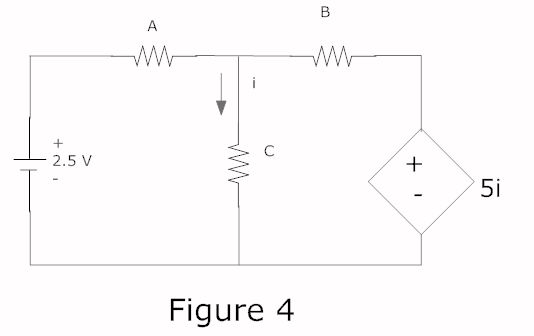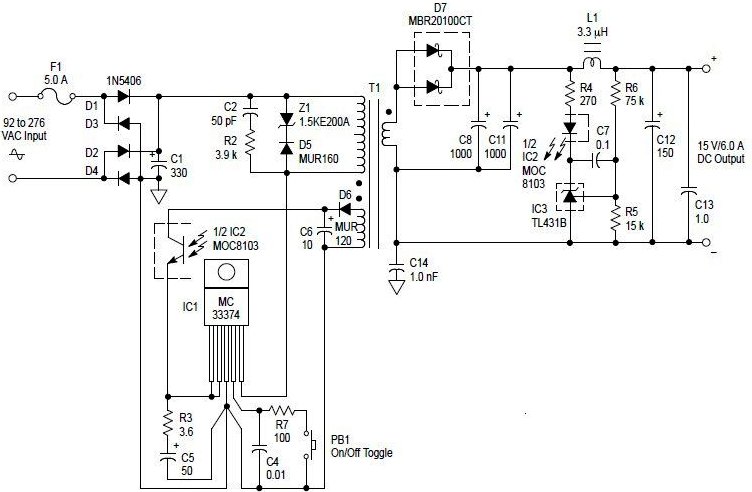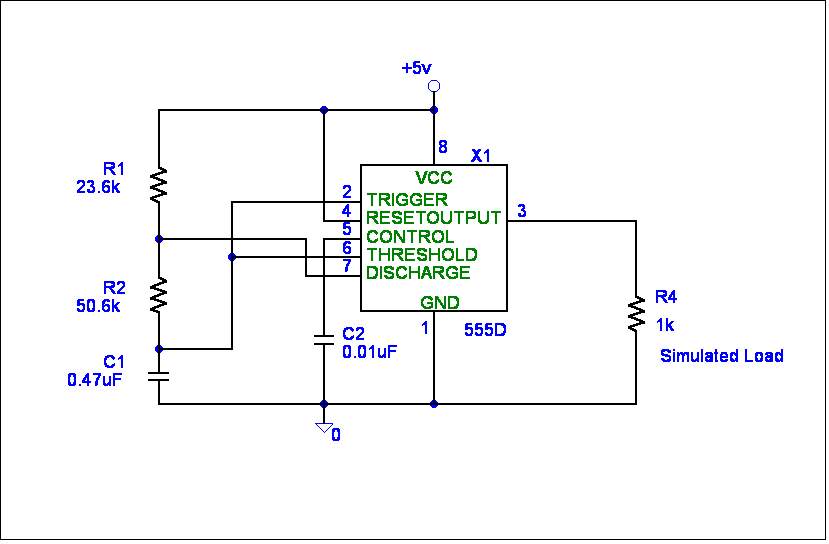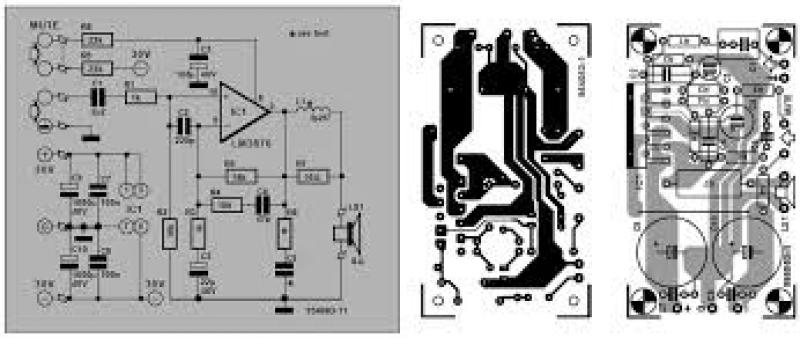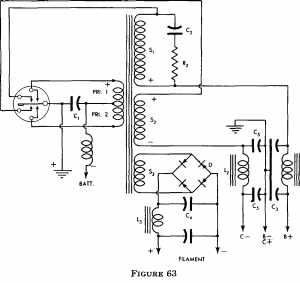Energy in a Magnetic Field
1. Definition and Properties of Magnetic Fields
1.1 Definition and Properties of Magnetic Fields
In understanding energy interactions within a magnetic field, it is crucial to grasp the fundamental concepts and characteristics of these fields. Magnetic fields are vectors that exert forces on moving charges and magnetic materials. Here, we delve into the intricacies of magnetic fields, exploring their properties and behaviors. ### Magnetic Field Basics At the core of magnetic phenomena lies the concept of a magnetic field, symbolized by the vector B. A magnetic field exerts a force on a moving charge according to the Lorentz force law, demonstrating the influence of both the field and the charge's velocity on the force experienced. ### Field Strength and Direction The strength of a magnetic field at a point is determined by the flux density B. The direction of the magnetic field is indicated by the orientation of the field lines, which form closed loops within the field. ### Magnetic Field Interactions When a current-carrying wire is placed in a magnetic field, it experiences a force in a direction perpendicular to both the current flow and the magnetic field. This phenomenon is described by the right-hand rule, which helps determine the force's direction. ### Magnetic Fields in Materials Materials can exhibit various responses to magnetic fields. Ferromagnetic materials, for instance, amplify magnetic fields and tend to retain magnetization even after the field is removed, making them crucial in applications like magnetic storage media. ### Magnetic Field Energy The concept of magnetic field energy is vital in analyzing the interactions within magnetic fields. When work is done to establish a magnetic field or change its intensity, energy is stored within the field and can subsequently be utilized when the field interacts with charged particles or currents. Given the intricate nature of magnetic fields and their implications on energy dynamics, a profound understanding of these properties is essential for further exploration in the realm of electromagnetism and energy conversions.Sources of Magnetic Fields
The presence of magnetic fields can originate from various sources, both natural and artificial. Understanding the diverse origins of magnetic fields is crucial in many scientific and technological applications. ####Natural Sources
Natural sources of magnetic fields include: - Earth's Magnetic Field: The Earth generates a strong magnetic field due to its internal dynamics involving convection currents in the liquid outer core composed of molten iron and nickel. This field plays a crucial role in navigation and protection against solar winds. - Cosmic Bodies: Planets, stars, and other celestial bodies possess magnetic fields due to the movement of charged particles within their atmospheres or interiors. Studying these magnetic fields helps in understanding the composition and behavior of these cosmic entities. ####Artificial Sources
In modern applications, magnetic fields are frequently generated artificially using various technologies. Some common sources of artificial magnetic fields include: - Electromagnets: These are created by passing an electric current through a coil of wire, inducing a magnetic field. Electromagnets are crucial components in devices like MRI machines and particle accelerators. - Permanent Magnets: Materials such as iron, cobalt, and nickel can retain magnetic properties even without an external magnetic field. These permanent magnets are extensively used in motors, generators, and magnetic storage devices. Understanding the origins and characteristics of magnetic fields from both natural and artificial sources is fundamental in many scientific disciplines and technological advancements. By exploring these sources, researchers and engineers can harness magnetic fields for a wide range of applications, from energy generation to data storage and medical diagnostics.1.3 Magnetic Field Lines and Visualization
In the study of energy in a magnetic field, understanding the concept of magnetic field lines and their visualization is crucial. Magnetic field lines provide a visual representation of the magnetic field's direction and strength at various points in space. These lines help in understanding the behavior of magnetic fields around different magnetic materials and current-carrying conductors. ### Understanding Magnetic Field Lines Magnetic field lines are imaginary lines that depict the direction a hypothetical north magnetic pole would take if placed in the vicinity of a magnetic source. The lines originate from the magnetic north pole and end at the magnetic south pole. They always form closed loops and never intersect. The density of the magnetic field lines gives an indication of the field's strength, with more lines indicating a stronger field. ### Visualizing Magnetic Field Lines To visualize magnetic field lines, one common method is using iron filings. When placed on a paper above a bar magnet, for instance, the iron filings align along the magnetic field lines, thereby tracing out the magnetic field's shape and direction. This simple experiment provides a tangible way to observe and understand the magnetic field pattern around a magnet. ### Real-World Applications Understanding magnetic field lines is essential in various practical applications. In electromagnets used in MRI machines, the understanding of field lines helps in optimizing the magnetic field's uniformity for accurate imaging. In electric motors, the configuration of field lines influences the motor's efficiency and torque production. By visualizing and manipulating magnetic field lines, engineers can design more efficient electrical and magnetic systems.2. Understanding Magnetic Energy Density
2.2 Calculating Energy Stored in Magnetic Fields
In electrical and magnetic systems, the concept of energy storage is crucial for understanding the dynamics and efficiency of various devices. When it comes to magnetic fields, energy can be stored within the field itself, typically through the magnetic field's interaction with current-carrying conductors or magnetic materials. ### Energy Density in a Magnetic Field To calculate the energy stored in a magnetic field, we first consider the energy density of the magnetic field, denoted by \( u_B \). The energy density of a magnetic field is given by:2.3 Role of Inductance in Energy Storage
In the study of energy in a magnetic field, understanding the role of inductance in energy storage is crucial for various applications in electronics, electrical engineering, and physics. Inductors, through their property of inductance, play a significant role in storing energy in magnetic fields. This subsection will delve into the theoretical underpinnings and practical implications of inductance in energy storage. Inductors, which are passive electrical components typically made of a coil of wire wound around a core, exhibit inductance due to their ability to store energy in the form of a magnetic field. When a current flows through an inductor, a magnetic field is generated around the coil, and energy is stored in this magnetic field. The amount of energy stored in the magnetic field is proportional to the square of the current flowing through the inductor and is quantified by the inductance of the inductor. Inductance (\(L\)) is defined as the ratio of the magnetic flux linkage (\(\Phi\)) generated by an inductor to the current (\(I\)) flowing through it. Mathematically, this relationship can be expressed as:3. Electromagnetic Devices and Their Energy Needs
Electromagnetic Devices and Their Energy Needs
In the realm of electromagnetism, the relationship between energy and magnetic fields plays a crucial role in the operation of various devices. Understanding how electromagnetic devices harness and manipulate energy is fundamental for engineers, physicists, and researchers alike. Let's delve into the intricate world of electromagnetic devices and their energy requirements. ###Energy Conversion in Electromagnetic Devices
Electromagnetic devices, such as generators, motors, transformers, and inductors, rely on the interaction between magnetic fields and electric currents to facilitate energy conversion. When a magnetic field interacts with a conductor carrying an electric current, energy is transferred between the two systems. This fundamental principle underpins the operation of numerous devices in modern technology. The process of energy conversion in electromagnetic devices is governed by Faraday's law of electromagnetic induction. This law states that a changing magnetic field induces an electromotive force (EMF) in a conductor, resulting in the generation of electrical energy. Understanding this principle is essential for designing efficient and reliable electromagnetic devices. ###Magnetic Fields and Energy Storage
In electromagnetic devices, magnetic fields can also be used for energy storage. Inductors, for example, store energy in the form of a magnetic field when a current passes through them. This stored energy can be released back into the circuit when needed, making inductors essential components in various electronic systems. The energy stored in a magnetic field is proportional to the square of the current flowing through the inductor and the inductance of the device. This relationship demonstrates the direct link between electrical energy and magnetic fields, highlighting the intricate balance required for efficient energy utilization in electromagnetic devices. ###Applications in Renewable Energy Systems
The principles of energy in magnetic fields find extensive applications in renewable energy systems. Devices such as wind turbines and hydroelectric generators utilize electromagnetic mechanisms to convert mechanical energy into electrical power. Understanding the intricate interplay between magnetic fields and energy conversion is critical for optimizing the performance of these sustainable energy sources. By harnessing the power of electromagnetic devices, engineers and researchers can continue to advance renewable energy technologies, contributing to a greener and more sustainable future for generations to come.3.2 Energy Transfer in Transformers
In the study of energy in a magnetic field, transformers play a crucial role in transferring electrical energy from one circuit to another through the principle of electromagnetic induction. Understanding the energy transfer process in transformers requires a deep dive into the physics of magnetic fields and the interaction of coils within these devices.
Transformer Basics
Transformers consist of two coil windings, typically known as the primary and secondary coils, which are usually wound around a common ferromagnetic core. When an alternating current flows through the primary coil, it generates a changing magnetic field which induces a voltage in the secondary coil through electromagnetic induction.
This induced voltage in the secondary coil can be either stepped up or stepped down based on the turns ratio between the primary and secondary coils. The efficiency of this energy transfer process is crucial in various electrical applications, from power distribution grids to electronic devices.
Energy Losses in Transformers
During the energy transfer process, transformers experience various losses that reduce the efficiency of the system. These losses include:
- Copper Losses: Resistive losses in the windings due to the flow of current.
- Iron Losses: Hysteresis and eddy current losses in the core material.
- Leakage Inductance Losses: Energy lost due to imperfect magnetic coupling between the coils.
Understanding and minimizing these losses are crucial for designing efficient transformers for practical applications.
Power Transfer Efficiency
The efficiency of a transformer is defined as the ratio of output power to input power. Mathematically, it can be expressed as:
Efficient transformers play a vital role in various industries, ensuring minimal energy wastage and optimal power transmission.
Real-World Applications
Transformers are ubiquitous in modern society and are used in a wide range of applications, including:
- Power distribution networks
- Electric vehicles and charging stations
- Electrical appliances and electronics
- Renewable energy systems
Enhancing the efficiency and reliability of transformers is essential for sustainable energy practices and advancing technological capabilities.
3.3 Magnetic Energy in Induction Heating
Exploring the utilization of magnetic fields for energy transfer in induction heating processes involves intricate physics principles combined with practical engineering applications. Induction heating relies on the phenomena of electromagnetic induction to efficiently generate heat in conducting materials.
Principles of Electromagnetic Induction
At its core, electromagnetic induction involves the creation of eddy currents within a conductor due to a changing magnetic field. This process leads to the conversion of the magnetic field's energy into thermal energy within the material.
Mathematical Formulation
To model the energy transfer in an induction heater, we start with Faraday's law of electromagnetic induction:
By integrating this equation over the surface of the conducting material simplifies the calculation of the induced currents and the resulting energy dissipation as heat.
Efficiency Considerations
Understanding the efficiency of induction heating systems involves analyzing factors such as the frequency of the alternating magnetic field, the material properties, and the design of the inductor coils. Optimizing these parameters is crucial for maximizing energy transfer and minimizing losses.
Real-World Applications
Induction heating is widely used in industrial processes such as metal forging, heat treatment, and even in domestic appliances like induction cooktops. Its efficiency, control, and rapid heating capabilities make it a versatile and valuable technology in various fields.
4. Magnetic Field Interaction with Matter
4.1 Magnetic Field Interaction with Matter
In electromagnetism, the interaction between magnetic fields and matter plays a crucial role in various applications, ranging from magnetic storage devices to electromagnetic propulsion systems. Understanding how different materials respond to magnetic fields is essential for designing efficient systems. This section delves into the intricacies of magnetic field interactions with matter. ### Magnetic Properties of Matter Matter can exhibit distinct responses to magnetic fields based on its composition and structure. Some materials, known as ferromagnetic materials, can be strongly magnetized, while others, such as paramagnetic or diamagnetic materials, exhibit weaker magnetic properties. These responses are governed by the alignment and movement of the material's atomic and molecular dipoles within an external magnetic field. ### Magnetic Susceptibility and Permeability The magnetic susceptibility of a material quantifies its magnetization in response to an applied magnetic field. It indicates how well a material can be magnetized. Permeability, on the other hand, defines the material's ability to support the formation of magnetic fields within it. Understanding these properties is fundamental for predicting how materials will interact with magnetic fields. ### Magnetic Hysteresis and Energy Loss When subjected to varying magnetic fields, ferromagnetic materials exhibit a phenomenon known as magnetic hysteresis. This phenomenon leads to energy losses due to the material's lag in magnetization and demagnetization processes. These losses are critical in applications where energy efficiency is a key consideration, such as in transformers and electric motors. #### Math Insight:4.2 Time-Varying Magnetic Fields and Energy
In the realm of electromagnetism, the interaction between magnetic fields and energy is a fundamental aspect that underpins various phenomena and technologies. Time-varying magnetic fields, in particular, play a crucial role in the transfer and transformation of energy within systems. Understanding the dynamics of energy in such fields is essential for engineers, physicists, researchers, and graduate students delving into advanced electromagnetics.Energy Transfer in Time-Varying Magnetic Fields
In time-varying magnetic fields, energy manifests itself through the interplay of changing magnetic fields with electric fields. Faraday's law of electromagnetic induction serves as the cornerstone for understanding energy transfer in such scenarios. This law states that a changing magnetic field induces an electromotive force (EMF) in a closed circuit, leading to the flow of current. Consider a scenario where a magnetic field varies with time within a closed loop. As the magnetic flux through the loop changes, an EMF is induced following Faraday's law. This induced EMF drives a current within the loop, resulting in the transfer of energy. The rate of change of magnetic flux dictates the magnitude of the induced EMF, thereby influencing the energy transfer process.Mathematical Formulation: Faraday's Law
The relationship between a changing magnetic flux and the induced EMF can be expressed mathematically through Faraday's law:Applications in Induction Heating
The principles of energy transfer in time-varying magnetic fields find practical applications in technologies like induction heating. By exploiting the phenomenon of induced current through electromagnetic induction, induction heating systems efficiently generate heat within conductive materials. This application showcases how energy within magnetic fields can be harnessed for transformative industrial processes. With a firm grasp of the dynamics of energy in time-varying magnetic fields, engineers and researchers can innovate in diverse fields ranging from power electronics to wireless energy transfer systems. This understanding forms a critical foundation for the design and optimization of advanced electromagnetic devices and systems. --- This section dives deep into the intricate relationship between time-varying magnetic fields and energy transfer, elucidating the fundamental principles and practical significance underlying this phenomenon. Understanding these concepts is pivotal for advanced-level readers seeking to navigate the complexities of electromagnetic phenomena and applications.5. Suggested Textbooks
5.1 Suggested Textbooks
- Classical Electrodynamics by Julian Schwinger et al. — This textbook offers a comprehensive exploration of electrodynamics, emphasizing the underpinning theories and complex vector calculus necessary to understand magnetic fields. The text integrates historical perspectives with rigorous mathematical derivations.
- Introduction to Electrodynamics by David J. Griffiths — A staple in electromagnetism education, Griffiths' textbook uses a clear, logical approach to explain electromagnetic theory, including energy considerations in magnetic fields. Known for its clarity and illustrative problem sets, it is a valuable resource for graduate students.
- Electrodynamics by Fulvio Melia — This advanced text delves into many subtleties of electromagnetic theory, providing a deep understanding of energy in magnetic fields through analytical and numerical methods. Suitable for researchers needing a robust theoretical framework.
- Modern Electrodynamics by Andrew Zangwill — Zangwill's work is noted for its modern approach, integrating applications with theoretical insights. It offers advanced treatments of topics such as energy distributions in magnetic fields, with detailed mathematical rigor and practical applications.
- The Feynman Lectures on Physics, Vol. II: Mainly Electromagnetism and Matter — A classic text that delivers detailed conceptual insights and derivations relating to electromagnetic fields. Feynman’s engaging style provides depth with approachability, ensuring a comprehensive understanding of energy in magnetic contexts.
- Electromagnetic Fields by Roald K. Wangsness — This book delivers a rigorous exploration of field theory with an array of problems that support learning and application of energy concepts in magnetic fields. It connects theoretical detail with real-world electromagnetic applications.
- The Classical Electromagnetic Field by Leonard Eyges — Eyges provides a detailed theoretical examination of classical electromagnetic fields, including comprehensive investigations into energy and power in magnetic fields. It caters to both physicists and engineers with its balanced explanation and advanced problem sets.
5.2 Research Papers and Articles
- Microscopic Theory of Magnetic Domain-Wall Structures and Dynamics — An insightful paper published in the "Physical Review B" journal by researchers Heine and Selfert. It explores the microscopic details of energy distributions in magnetic fields and domain-wall dynamics.
- Review on Magnetic Materials for Energy Storage — Published in the "Journal of Physics D: Applied Physics," this review paper covers advancements in magnetic materials used for efficient energy storage, including the role of magnetic fields.
- Use of Magnetocaloric Effect for Energy Conversion — This research article in "Journal of Magnetism and Magnetic Materials" discusses the magnetocaloric effect as a method for converting thermal energy in magnetic fields into useful work.
- Quantum Spin Liquids and their Applications in Magnetic Storage — A groundbreaking study published in "Nature" that discusses quantum spin liquids and their potential applications in magnetic energy storage systems.
- The Impact of Magnetic Fields on Energy Efficiency — In this article from "Ferroelectrics," researchers examine the influence of external magnetic fields on the energy efficiency of electronic systems and devices.
- Advanced Electromechanics and Magnetic Field Control — A publication from the "ACS Applied Energy Materials" journal that covers the manipulation of energy in magnetic fields through advanced electromechanical systems.
- IEEE Review on Magnetic Energy Harvesting Devices — An IEEE review that discusses the latest advancements and applications of magnetic energy harvesting technologies in various engineering domains.
- Magnetic Field-Induced Phase Transitions — Published in the "Frontiers of Physics," this article presents a comprehensive study on how magnetic fields influence phase transitions in materials and energy implications.
5.3 Online Resources and Courses
- MIT OpenCourseWare — MIT provides highly regarded courses covering a range of topics in physics, including magnetic fields and electromagnetic theory. This resource offers comprehensive lecture notes, assignments, and exams for self-paced learning.
- Coursera: Electricity and Magnetism — Offered by the Georgia Institute of Technology, this Coursera course dives into concepts of electromagnetism and energy in magnetic fields, providing interactive exercises and video lectures.
- Khan Academy: Magnetic Forces and Fields — Khan Academy provides free resources to understand the fundamentals of magnetic fields, including video lessons and practice problems.
- edX: Electromagnetism — This online course explores critical topics such as Maxwell's equations and the interaction of electromagnetic fields with matter. It is offered by Delft University of Technology.
- Physics Tutorials: Magnetism — A comprehensive tutorial covering theoretical and practical aspects of magnetism, offering simplified explanations and problem-solving tips for advanced learners.
- University of Rochester: Electricity & Magnetism — Offers detailed lecture materials and experimental insights into electromagnetism, suitable for advanced academic purposes and research-based learning.
- HyperPhysics: Magnetic Fields — A valuable resource for in-depth theoretical explanations and interlinked concepts in magnetism and its significance in various applications.
